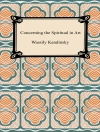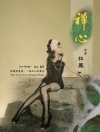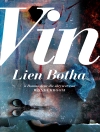How is art criticism to be understood within an expanding artistic field? A look at its history and its manifestations within globalized conditions shows the variety of the genre, of the criteria and of the styles of writing. This reader is an attempt to bring a diverse range of art-critical voices and perspectives into conversation with each other, with texts from the 18th century to the present. The editors Beate Söntgen and Julia Voss have invited colleagues from various geographical and intellectual backgrounds to present and discuss the art critics of their choice, choosing one example from their respective bodies of work to comment upon. How have these writers approached art criticism? Which styles do they employ? What makes them extraordinary? What can we learn from their writings today, and why is it important in its contemporary context?
BEATE SÖNTGEN (*1963) is professor of art history at Leuphana University Lüneburg. She studied art history, philosophy, and modern German literature in Marburg and Berlin. She is director of the DFG Research Training Group ‘Cultures of Critique: Forms, Media, Effects’ and co-director of the program ‘Pri Mus – Doctoral Studies in Museums.’
JULIA VOSS (*1974) is an honorary professor at Leuphana University Lüneburg. She studied art history, modern German literature, and philosophy in Berlin and London. She is herself an art critic and journalist and was deputy head of the arts section of the Frankfurter Allgemeine Zeitung.
İçerik tablosu
Inhalt
Foreword
Why Art Criticism? An Introduction
Passion, Performance, and Soberness: Denis Diderot – Beate Söntgen
In Conversation: Clemens Brentano, Achim von Arnim – Johannes Grave
Emotional Collectivities: Julius Meier-Graefe – Stephanie Marchal
The Leak: Berta Zuckerkandl – Julia Voss
Crafts and the Spiritual: Ananda K. Coomaraswamy – Monica Juneja
Practical Formalist: Roger Fry – Beate Söntgen
Agitation: Sergei Tretyakov – Valerija Kuzema
Snapshot: Alexander Rodchenko – Margarete Vöhringer
Decomposition: Georges Bataille – Malte Rauch
Decolonizing Art History: Ananda K. Coomaraswamy – Parul Dave Mukherji
Advocating the Collective: Luis Vidales – Camilo Sarmiento Jaramillo
Materialism and Proximity: Francis Ponge – Isabelle Graw
Censorship and the Authorial ‘I’: Lothar Lang – Valerie Hortolani and Valerija Kuzema
Trespasser of Gatekeeping: Oscar Masotta – Juli Carson
Embedded Chronicler: Victor Hakim – Monique Bellan
Undisciplined: Peter Gorsen – Thorsten Schneider
In Drag: Mary Josephson – Astrid Mania
Self-Reflective Connectivity: Lawrence Alloway – Beatrice von Bismarck
Vulnerability and Resistance: Marta Traba – Florencia Malbrán
Fellow-Feeling: Roland Barthes – Sarah Wilson
Documentation as Dialogue: Allan Sekula – Michael F. Zimmermann
Deculturization: Annemarie Sauzeau-Boetti – Sabeth Buchmann
Coming Together: Demas Nwoko and New Culture – Azu Nwagbogu
Gathering Voices, Feeling Relations: Arlene Raven – Oona Lochner
Drawing Another Line: Ješa Denegri – Maja and Reuben Fowkes
Chronopolitical Intervention: Mark Sinker – Ana Teixeira Pinto
A Drifting Mind: Lynne Tillman – Isabel Mehl
Criteria Against All Odds: Stefan Germer – Peter Geimer
Decentering: Igor Zabel – Maja and Reuben Fowkes
Tactics of Alienation: Walid Sadek – Ghalya Saadawi
Art Historiography: Vardan Azatyan – Angela Harutyunyan
Hatchet Job: Julia Voss – Wolfgang Kemp
Bridging Borders: Helia Darabi – Anita Hosseini
Through the Digital Looking Glass: Hito Steyerl – Ying Sze Pek
The Cultural Logic of Financialization: Melanie Gilligan – Holger Kuhn
Camp and Credit Cards: Takashi Kashima – Yuriko Furuhata
Nearly Unbiased: Patrick Mudekereza – Julia Grosse
Retroactivity: Peter Richter – Andreas Beyer
Troll: Anonymous – Miriam Rasch
Queering: Adwait Singh – Rebecca John
Culture and Capital: Claire Bishop – Anna Kipke
Merging: Enos Nyamor – Yvette Mutumba
Follow the Money: Aruna D’Souza – David Mielecke
Reviews from 4Columns – Aruna D’Souza
The Series: Jennifer Higgie – Julia Voss
Biographies
Bibliography
Index of Names
Colophon and credits












